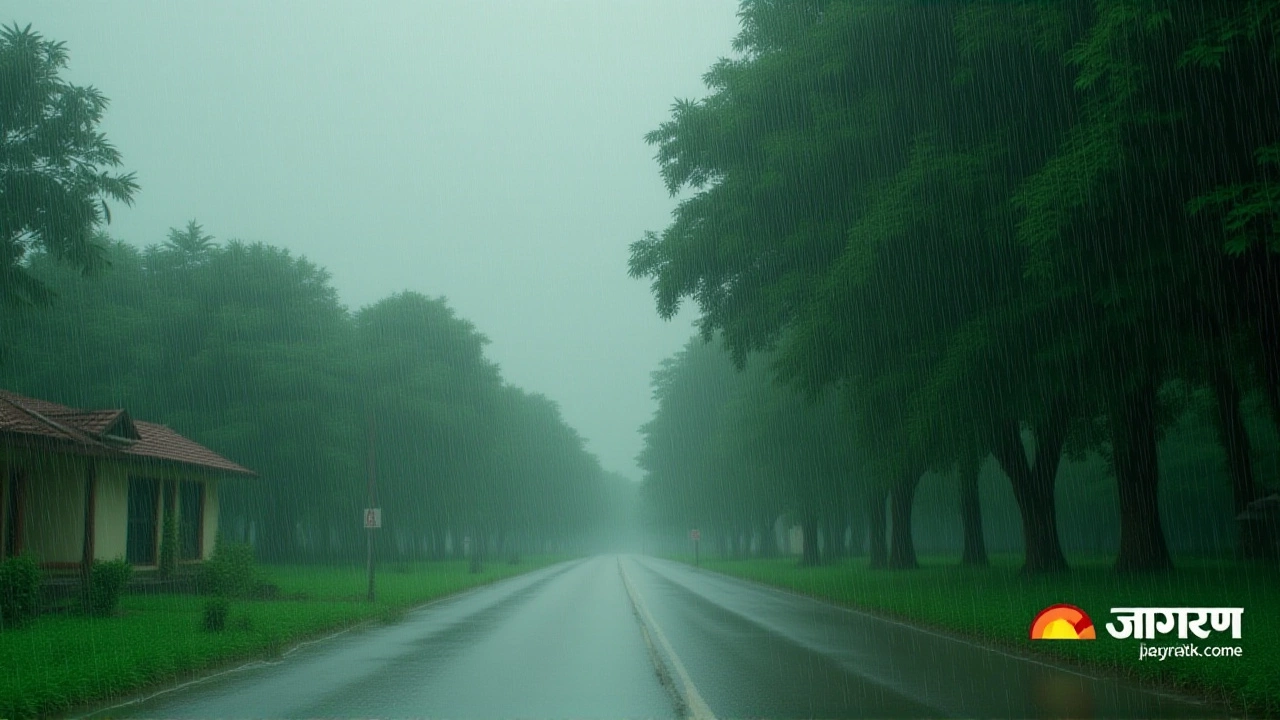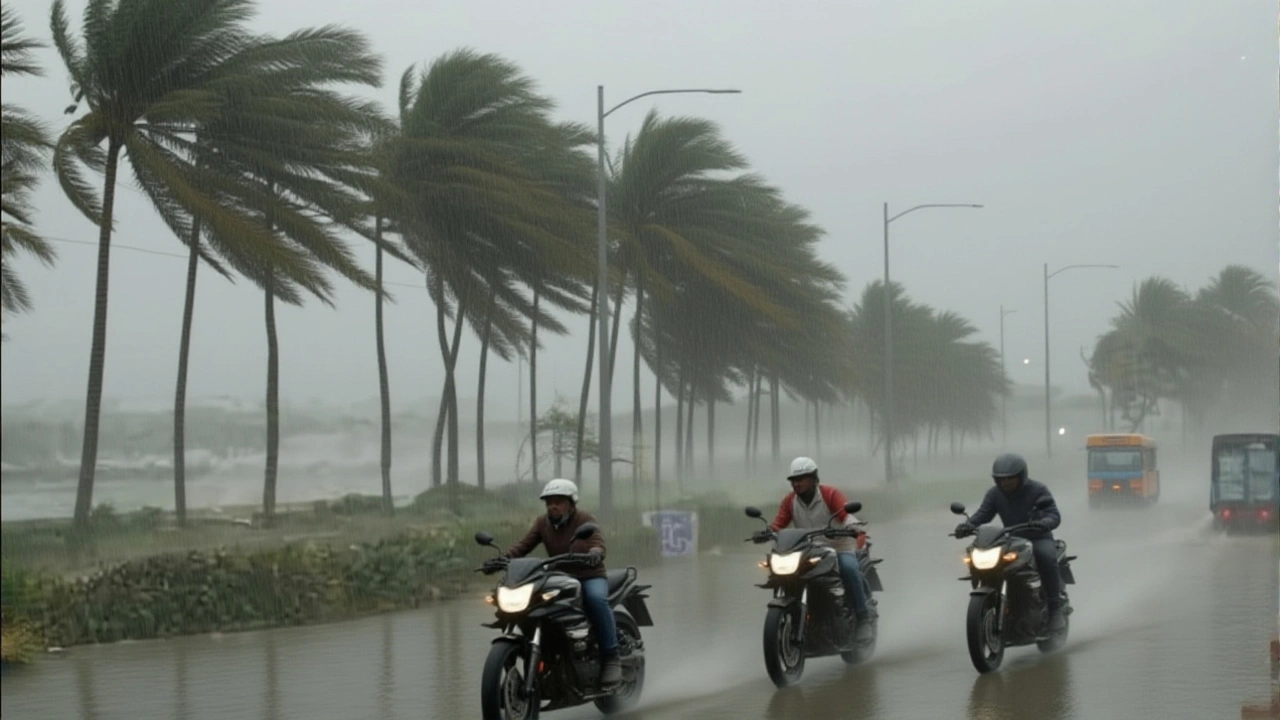
Uttar Pradesh is set for an unusually dry and sweltering October 2025, with just two days of rain expected across all 75 districts — a pattern that’s raising concerns among farmers, urban planners, and public health officials. According to forecasts from Weather25.com, AccuWeather, and Climate-Data.org, daytime highs will hover between 24°C and 34°C (75°F–93°F), while nighttime lows dip as low as 16°C (61°F) by month’s end. The total rainfall? A mere 37 millimeters — less than what falls in a single heavy shower during monsoon season. And with 11.7 hours of daily sunshine, this October feels less like autumn and more like an extension of summer.
Heat Waves and Cooling Trends: A Month of Extremes
The temperature swing across the month is stark. In Ghaziabad, Lucknow, and other major urban centers, October 10, 2025, is projected to be the hottest day, hitting 32.9°C (91.2°F), per Climate-Data.org. But then comes the drop. By October 31, temperatures plunge to 15.9°C (60.7°F) — a 17-degree Celsius shift in just three weeks. AccuWeather’s day-by-day breakdown confirms this: highs start at 96°F (36°C) in early October, then steadily decline to 83°F (28°C) by the final days. Nighttime lows, too, fall from 82°F to 70°F. It’s not just a change in weather — it’s a rapid climate transition, compressed into 31 days.Interestingly, Easeweather.com reports October 2025 will be 2.3°C cooler than the 30-year seasonal average, averaging just 31.8°C. That’s counterintuitive — how can a month be both hotter than normal and cooler than average? The answer lies in the baseline. The region’s typical October has been warming steadily since the 1990s, so even a "cool" month now feels extreme by older standards. The result? A population caught between nostalgia for "cooler Octobers" and the reality of a climate that no longer follows historic patterns.
Water, Health, and the Silent Crisis
With only two rainy days, groundwater recharge is minimal. In rural districts like Azamgarh and Banda, where irrigation relies on seasonal rains, farmers are already preparing for crop stress. "We’ve seen this before — dry Octobers mean delayed wheat sowing," says Dr. Rajiv Mehta, an agricultural economist at Banaras Hindu University. "If the soil doesn’t retain moisture by mid-November, we could see a 15% drop in rabi yields." The state’s water board has not issued alerts, but local NGOs report increased demand for water tankers in Lucknow’s peripheral neighborhoods.Public health officials are watching heat-related illnesses closely. Hospitals in Kanpur and Varanasi have begun training staff on early signs of dehydration and heat exhaustion. "It’s not just the elderly," says Dr. Anjali Sharma, a senior physician at King George’s Medical University. "We’re seeing more delivery workers, street vendors, and students with dizziness and fainting. The advice is simple: drink water every hour, avoid midday exposure, and wear light cotton. But not everyone can follow it."

What About the Rain? And the Cyclone Myth
The forecast mentions "two rainy days" — but doesn’t specify where or when. That’s the problem. Unlike monsoon rains, which blanket the state uniformly, these October showers are likely scattered, localized events — maybe one in Allahabad, another near Firozabad. No major river basins will benefit. And despite rumors circulating on social media, no cyclone — not "Montha," not any other name — is predicted by any authoritative source. Weather25.com, AccuWeather, and Easeweather.com all explicitly state no cyclonic activity is expected in the Bay of Bengal or over northern India during this period.That’s a relief — but also a warning. Cyclones are dramatic. They make headlines. What’s more dangerous is the quiet, creeping drought — the kind that doesn’t come with warnings, just parched earth and shrinking reservoirs.

What Comes Next?
Autumn 2025 is expected to remain dry, with temperatures continuing to dip into November. WiseMeteo.com forecasts lows of 61°F (16°C) by November 30 and highs still reaching 95°F (35°C) in early November. The state’s disaster management department has not activated any emergency protocols — but experts say they should. "We’ve got the data," says Dr. Mehta. "We just haven’t built the response."For travelers, the advice is clear: pack for extremes. Light clothing for the day, a light jacket for night. Carry water. Check the 14-day forecast before arriving. And don’t believe everything you read online — especially about cyclones.
Frequently Asked Questions
Why is October 2025 so dry in Uttar Pradesh when previous years had more rain?
October rainfall in Uttar Pradesh has declined by nearly 40% since 2000 due to shifting monsoon patterns and reduced western disturbances. The 37 mm expected this year is below the 50–60 mm historical average. Climate models suggest this trend will continue as sea surface temperatures in the Indian Ocean warm, weakening moisture transport to northern India.
Which districts are most at risk from the heat and dry conditions?
Eastern districts like Azamgarh, Mau, and Sant Kabir Nagar — already water-stressed — face the highest risk. These areas rely on rain-fed agriculture and lack robust groundwater infrastructure. Urban centers like Lucknow and Kanpur have better supply chains but face higher heat stress due to urban heat island effects.
Is the "cooler than usual" claim misleading given the high temperatures?
Yes — and that’s the core of the confusion. "Cooler than usual" refers to deviation from the 30-year average, which itself has risen by 1.8°C since 1990. So a 31.8°C average today feels hotter than a 34°C average did in 1985. It’s a shifting baseline. What’s labeled "cool" is now the new normal — and it’s still dangerously hot for vulnerable populations.
Why do different weather sites show slightly different temperature ranges?
Different platforms use varying data sources and modeling techniques. Climate-Data.org relies on ground station records, while AccuWeather uses satellite-enhanced models. Easeweather.com averages regional trends. The differences are minor — usually under 1–2°C — but reflect how forecasts are calibrated. For planning, it’s best to take the median range: 24–34°C.
Could this dry October lead to water shortages in winter?
Absolutely. October’s rainfall recharges shallow aquifers used for early winter crops like wheat and mustard. With only 37 mm, soil moisture levels will be 30–40% below normal by mid-November. In districts without deep tubewells, farmers may delay sowing — risking lower yields in January. Urban water boards are already monitoring reservoir levels in the Ganga basin, which are currently 12% below seasonal norms.
Are there any government plans to address this weather pattern?
As of now, no formal drought or heatwave alert has been issued by the Uttar Pradesh government. The state’s disaster management authority has not activated any contingency plans, though the agriculture department has issued advisories for farmers to use drought-resistant seeds. Experts warn that without proactive water conservation and public cooling centers, the economic and health toll could rise sharply in the coming years.
 Cricket
Cricket